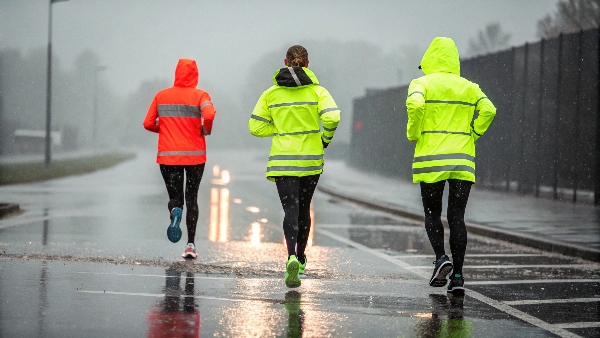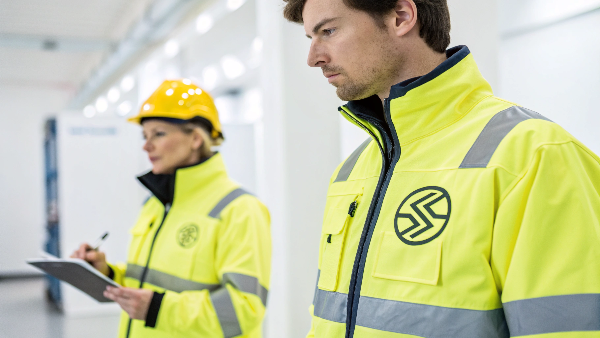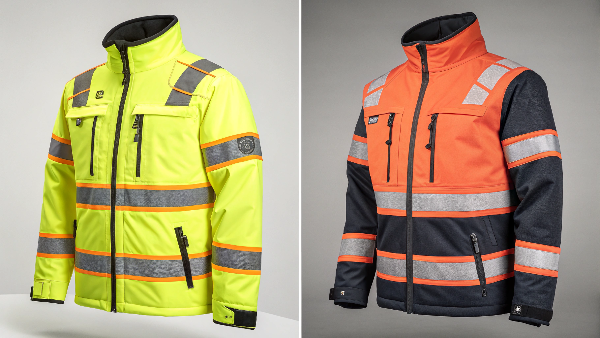Cycling can be really enjoyable, but it has its dangers. Accidents can happen when you least expect them. Using the right safety gear is a simple way to protect yourself.
Essential safety gear for cyclists includes a helmet, reflective gear, lights, and eye protection. A helmet is key for head safety. Reflective clothing and lights help others see you. Eye protection shields your eyes.

It's really important to understand why these pieces of gear matter so much. Knowing this can truly make your rides safer and more enjoyable. Let's explore each essential item and how it contributes to your protection on the road or trail. This knowledge helps you make informed choices every time you head out.
What is the recommended safety gear for every cyclist?
Are you unsure about what gear you really need for cycling? Riding without the proper equipment can be risky. It's much better to be prepared and protected.
Every cyclist should use a helmet1, front and rear lights, reflective gear2, and eye protection3. These items are basic but greatly increase your safety on any cycling journey, day or night.
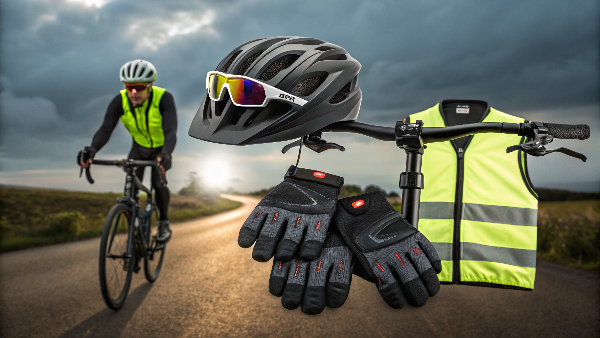
I believe every cyclist, no matter their experience level or where they ride, should consider certain gear non-negotiable. First, a well-fitting helmet is at the top of my list. Its main job is to protect your brain if you fall or have a collision. Then, good lights are vital. You need a white light at the front so you can see the path ahead, and a red light at the back so traffic behind you can see you clearly. This is important not just at night, but also in dim conditions like dawn, dusk, or bad weather. Reflective gear is another key element. This could be on your clothing, your bike, or accessories. At Vissafetywear, we specialize in high-visibility clothing with certified reflective materials. This gear makes you much more noticeable to drivers, especially when their headlights hit it. Finally, eye protection like cycling glasses or goggles keeps dust, insects, wind, and harmful UV rays out of your eyes.
| Gear | Primary Function | When to Use |
|---|---|---|
| Helmet | Protects head from impact | Every ride |
| Front Light | Illuminates path, makes you visible | Night, low light, poor weather |
| Rear Light | Makes you visible to traffic from behind | Night, low light, poor weather |
| Reflective Gear | Enhances visibility to motorists | Especially night, low light |
| Eye Protection | Shields eyes from debris, sun, wind | Every ride |
What safety equipment is required for cycling?
Do you ever wonder if there are legal rules about cycling safety gear? Some equipment isn't just a good idea; it's actually required by law. You don't want to get a fine or worse.
Safety equipment requirements for cycling vary by location. Often, helmets are mandatory for younger riders4. Lights and reflectors are usually required for night riding. Always check your local laws.
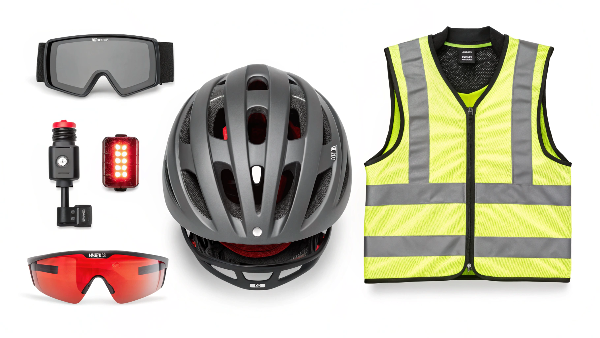
When we talk about "required" safety equipment, it often means what the law says you must use. These laws can be different depending on your country, state, or even city. So, the first thing I always tell people is to check their local traffic regulations for cyclists. For example, in many places, helmets are legally required for children and sometimes for all cyclists. This is because head injuries can be so serious. Lights are another common legal requirement. If you're cycling at night or in poor visibility conditions, you'll likely need a white front light and a red rear light. Reflectors are also often mandated. These usually include a red rear reflector, white front reflector, and sometimes pedal or wheel reflectors. The main reason these items are legally required is for public safety – to protect both the cyclist and other road users. As a manufacturer, we ensure our reflective materials meet standards that support these legal requirements, because compliance is key for our clients like Danny Cheng, who distributes in North America.
| Common Legal Requirement | Typical Mandate | Reason for Mandate |
|---|---|---|
| Helmet | Often for minors, sometimes for all cyclists | Prevent serious head injuries |
| Front & Rear Lights | Required for night riding/poor visibility | Ensure cyclist is seen |
| Reflectors | Often required (front, rear, pedals, wheels) | Passive visibility |
What gear do cyclists need?
Are you thinking beyond just the absolute safety minimums? Having the right gear can make your rides more comfortable and efficient. It is good to know what else can improve your cycling experience.
Cyclists need essential safety gear like helmets and lights. They also benefit from comfort items like gloves and padded shorts, plus utility items like a pump and multi-tool.
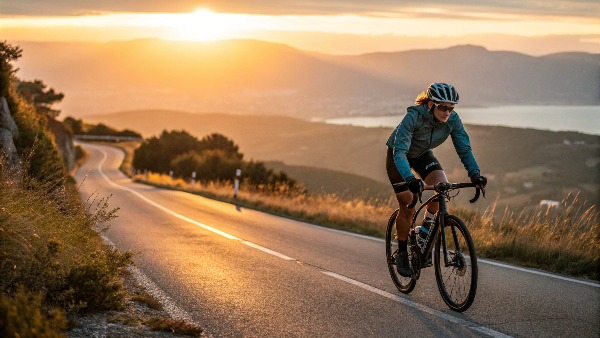
When I think about what gear cyclists need, I go beyond just the core safety items we've discussed. Of course, a helmet, lights, and visibility aids are crucial. But for a better overall cycling experience, there's more to consider. For comfort, especially on longer rides, cycling gloves5 can prevent blisters and absorb vibrations. Padded cycling shorts make a huge difference in seat comfort. Proper cycling shoes can improve power transfer if you use clipless pedals. Then there's utility gear. A water bottle and cage are essential for staying hydrated. A good bike lock6 is necessary if you plan to leave your bike unattended. I also always recommend carrying a small saddlebag or backpack with a spare inner tube, a mini-pump or CO2 inflator, tire levers, and a basic multi-tool. These items can help you fix a flat tire or make minor adjustments on the go, preventing a long walk home. This kind of preparedness makes cycling much more enjoyable and less stressful.
| Gear Category | Examples | Benefit |
|---|---|---|
| Core Safety | Helmet, Lights, Reflective Gear | Injury prevention, visibility |
| Comfort | Padded shorts, Gloves, Cycling-specific clothing | Reduced chafing, better grip, weather protection |
| Hydration/Nutrition | Water bottles, Energy gels/bars | Sustained energy and performance |
| Maintenance/Repair | Pump, Patch kit, Multi-tool, Spare tube | On-the-go fixes, reduces being stranded |
| Security | Bike lock | Prevents theft |
What are the essentials for bike safety?
Do you want to make sure you have the absolute must-haves for bike safety? Some items are truly non-negotiable for protecting yourself. Focusing on these essentials offers the best defense.
The core essentials for bike safety are a well-fitted helmet, effective front and rear lights, and high-visibility clothing or accessories. These are vital, especially in traffic or low light.

For me, the true essentials for bike safety boil down to three main categories: protecting your head, being able to see, and ensuring others can see you. First, a helmet. It must fit properly and meet safety standards like CPSC (in the US) or similar standards elsewhere. It's your primary defense against head injuries. Second, lights. You need a bright white front light to illuminate your path and a strong red rear light so you're visible from behind. Consider lumens for brightness and choose modes (flashing or steady) appropriate for conditions. Battery life is also a practical concern. Third, visibility. This is where high-visibility clothing and reflective materials shine. Brightly colored jerseys help during the day. For dawn, dusk, and night, reflective elements are critical. At Vissafetywear, our high-visibility apparel uses materials certified to EN ISO 20471 or ANSI/ISEA 107. These standards are important for clients like Danny Cheng, who supplies safety gear to industries where worker visibility is paramount. He knows that quality reflective gear can be a lifesaver, and using compliant materials minimizes risks for his business. These three – helmet, lights, and visibility – are the pillars of bike safety.
| Safety Essential | Key Feature | Why Critical |
|---|---|---|
| Helmet | Proper fit, certified (e.g., CPSC, EN 1078) | Protects against serious head injuries. |
| Lights (Front/Rear) | Adequate brightness (lumens), good battery | Allows you to see and be seen by others. |
| Visibility Aids | Bright colors (day), Reflective material (low light/night), Certified (e.g., EN ISO 20471) | Makes you conspicuous to motorists and others. |
What is the most important accessory a cyclist can wear?
If you had to choose just one safety accessory, which one would it be? This question often comes up, and there's a strong consensus. The answer is quite clear for good reason.
The most important accessory a cyclist can wear is, without a doubt, a helmet. It provides critical protection against head injuries, which can be severe or even fatal.
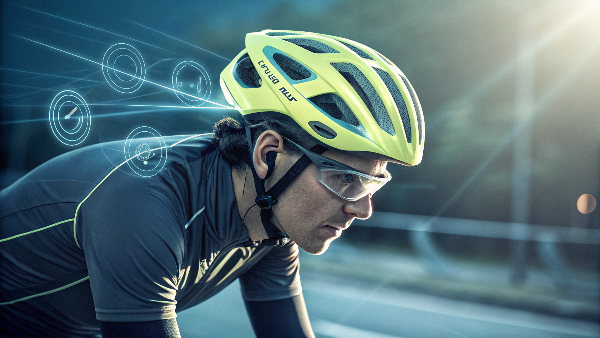
In my experience, and based on a lot of safety data, the single most important accessory for a cyclist is a helmet. While lights and reflective gear are vital for being seen, a helmet is your last line of defense for your head in a crash. Head injuries can have devastating, life-altering consequences, including traumatic brain injuries (TBIs). Statistics consistently show that helmets significantly reduce the risk and severity of head injuries in cycling accidents. A good helmet is designed to absorb and dissipate the force of an impact, cushioning your skull. It's crucial that the helmet fits correctly – snug but comfortable – and that the straps are adjusted properly. Also, remember that a helmet should be replaced after any significant impact, even if it looks undamaged, as its protective structure might be compromised. I recall an incident a few years ago when a friend had a seemingly minor fall, but his helmet was cracked. He was fine, but it was a stark reminder of the forces involved. Without that helmet, his outcome could have been very different. So, while other gear is important, the helmet is truly indispensable.
What are the best cycling glasses?
Do your eyes need protection when you're cycling? Absolutely, and not just any glasses will do the job. Finding the right eyewear makes a big difference to your comfort and safety.
The best cycling glasses offer impact resistance7, UV protection, good coverage, and anti-fog features. Interchangeable lenses are also very useful for different light conditions, providing versatility.
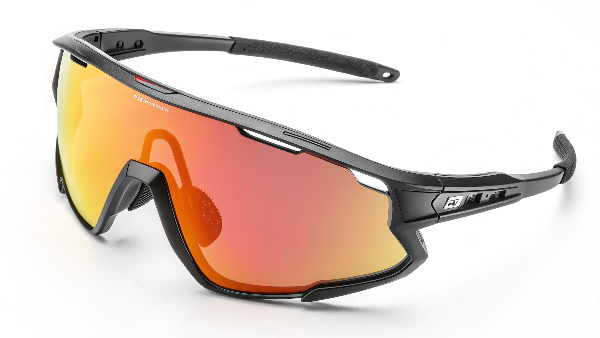
When I'm asked about the best cycling glasses, I usually highlight a few key features. First, impact resistance is crucial. Look for lenses made from polycarbonate, which is very strong and shatter-resistant. This protects your eyes from road debris, insects, or branches. Second, full UV protection is a must. Lenses should block 100% of UVA and UVB rays (often labeled as UV400). Good coverage is also important; a wraparound style helps to shield your eyes from wind, dust, and sun from all angles. This also helps prevent your eyes from watering in the wind. Anti-fog coatings or ventilation features are very beneficial, especially in humid conditions or when you're working hard. Many quality cycling glasses come with interchangeable lenses8. This is great because you can swap them out based on the lighting: clear lenses for low light or night, yellow or orange for enhancing contrast in overcast conditions, and dark tints for bright sunny days. Some even offer photochromic lenses that adjust automatically to changing light. Finally, ensure they fit well and are comfortable, with non-slip nose pads and temple grips to keep them in place.
| Feature | Benefit for Cyclists |
|---|---|
| Impact Resistance | Protects eyes from debris, crashes |
| UV Protection (UV400) | Shields eyes from harmful sun rays |
| Wraparound Coverage | Blocks wind, dust, peripheral light |
| Anti-Fog / Ventilation | Prevents lenses from steaming up |
| Interchangeable Lenses | Adapts to various light conditions |
| Secure & Comfortable Fit | Stays in place, allows for long wear |
Can I bike without a helmet?
Are you ever tempted to just hop on your bike without a helmet? It might feel freeing for a moment, but it is a significant gamble. It's important to understand the risks involved.
Legally, adults can sometimes bike without a helmet depending on local laws. However, I strongly advise against it due to the high risk of severe head injury in an accident.
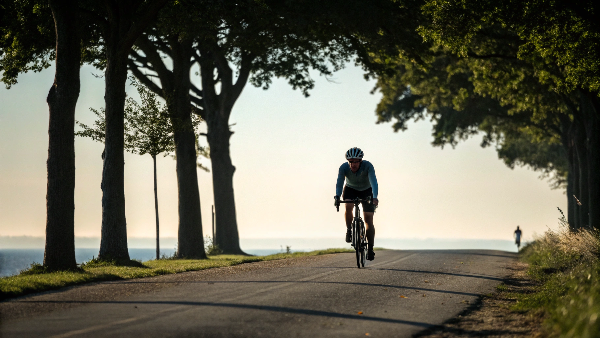
The question of whether you can bike without a helmet has two sides: legal and practical safety. Legally, in many places, adults are not required by law to wear a helmet, though laws often mandate them for children. You should always check your specific local regulations. However, from a safety perspective, my answer is a firm "you shouldn't." The risk of a head injury in a cycling accident is real, and the consequences can be life-changing or even fatal. Traumatic Brain Injuries (TBIs) can result from even seemingly low-speed falls if your head hits a hard surface. Helmets are specifically designed to reduce this risk by absorbing much of the impact energy. As someone in the safety wear industry, I've seen the data and heard too many stories. Choosing to ride without a helmet is choosing to accept a much higher risk of serious injury. It's not just about you; it's also about the impact an injury could have on your family and friends. I always encourage riders to prioritize their long-term well-being over momentary convenience or perceived discomfort.
Do I have to have reflectors on my bike?
Do those small reflectors on bikes actually make a difference? They might seem minor, but they play an important role in your visibility. Don't underestimate these simple safety aids.
Reflectors are often legally required and are essential for passive visibility. They help motorists see your bike, especially at night or in low-light conditions, by reflecting their headlights.
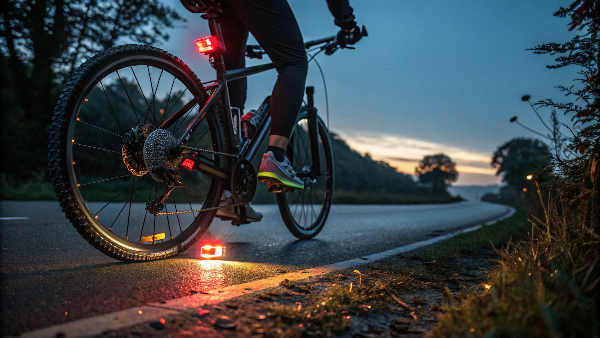
Reflectors are a fundamental part of bike safety, especially for what we call "passive visibility." Unlike lights, which generate their own illumination (active visibility), reflectors work by bouncing back light from an external source, like a car's headlights. This makes your bike visible even if your lights fail or if a driver approaches from an angle where your lights aren't directly visible. Legally, many jurisdictions require bikes to be equipped with a set of reflectors: typically a red one on the rear, a white one on the front, and amber or white ones on the pedals or wheels. While they are not a substitute for good active lights, especially at night, they are an excellent supplement. At Vissafetywear, we understand the importance of high-quality reflective materials. The reflective tapes we use on our high-visibility clothing meet stringent global standards like EN ISO 20471 and ANSI/ISEA 107. Our client, Danny Cheng, who imports PPE for the North American market, relies on these certifications. He knows that high-performance reflective materials are crucial for the safety of workers using his products, and they are far more effective than basic bike reflectors in making a person conspicuous. So yes, reflectors are important, and quality matters.
| Reflector Type | Common Color | Typical Location | Importance |
|---|---|---|---|
| Rear Reflector | Red | Back of bike | Makes bike visible to traffic from behind. |
| Front Reflector | White | Front of bike | Helps oncoming traffic see the bike. |
| Pedal Reflectors | Amber/White | Front and back edges of pedals | Shows motion, helps identify as a cyclist. |
| Wheel/Spoke Reflectors | White/Yellow | On spokes or rims | Enhances side visibility, shows motion. |
Conclusion
In short, using a helmet, lights, reflective gear, and eye protection makes cycling much safer and more enjoyable for everyone.
-
Explore this link to find top-rated helmets that ensure maximum protection and comfort for cyclists. ↩
-
Learn about the significance of reflective gear in enhancing visibility and safety for cyclists, especially at night. ↩
-
Discover the best eye protection options for cyclists to shield against debris and UV rays while riding. ↩
-
Understanding local helmet laws is crucial for compliance and safety. Explore this link to ensure you're informed about regulations in your area. ↩
-
Learn about the advantages of cycling gloves in preventing blisters and improving grip on the handlebars. ↩
-
Discover the best bike locks to keep your bicycle safe from theft while you're away. ↩
-
Understanding impact resistance can help you choose glasses that protect your eyes effectively while cycling. ↩
-
Discover how interchangeable lenses can enhance your cycling experience by adapting to different light conditions. ↩

